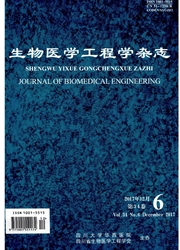

 中文摘要:
中文摘要:
脑机接口系统的核心问题之一是信号分类。本文针对脑电信号的异构融合特征的分类问题提出了一种新方法:封装式弹性网特征选择和分类。首先,对预处理后的脑电(EEG)信号联合应用时域统计、功率谱、共空间模式和自回归模型方法提取高维异构融合特征。其次,采用封装方式进行特征选择:对训练数据采用弹性网罚逻辑回归拟合模型,通过坐标下降法估计模型参数,运用10倍交叉验证选择出最优特征子集。最后采用已训练的最优模型对测试样本进行分类。实验中采用国际BCI竞赛Ⅳ的EEG数据,结果表明,该方法适用于高维融合特征的最优特征子集选择问题,对于EEG信号的识别不仅效果好、速度快,而且能够选出与分类更相关的子集,获得相对简单的模型,平均测试正确率达到了81.78%。
 英文摘要:
英文摘要:
Signal classification is a key of brain-computer interface (BCI). In this paper, we present a new method for classifying the electroencephalogram (EEG) signals of which the features are heterogeneous. This method is called wrapped elastic net feature selection and classification. Firstly, we used the joint application of time-domain statistic, power spectral density (PSD), common spatial pattern (CSP) and autoregressive (AR) model to extract high-dimensional fused features of the preprocessed EEG signals. Then we used the wrapped method for feature selection. We fitted the logistic regression model penalized with elastic net on the training data, and obtained the parameter estimation by coordinate descent method. Then we selected best feature subset by using 10-fold cross-validation. Finally, we classified the test sample using the trained model. Data used in the experiment were the EEG data from international BCI Competition IV. The results showed that the method proposed was suitable for fused feature selection with high-dimension. For identifying EEG signals, it is more effective and faster, and can single out a more relevant subset to obtain a relatively simple model. The average test accuracy reached 81.78%.
 同期刊论文项目
同期刊论文项目
 同项目期刊论文
同项目期刊论文
 期刊信息
期刊信息
